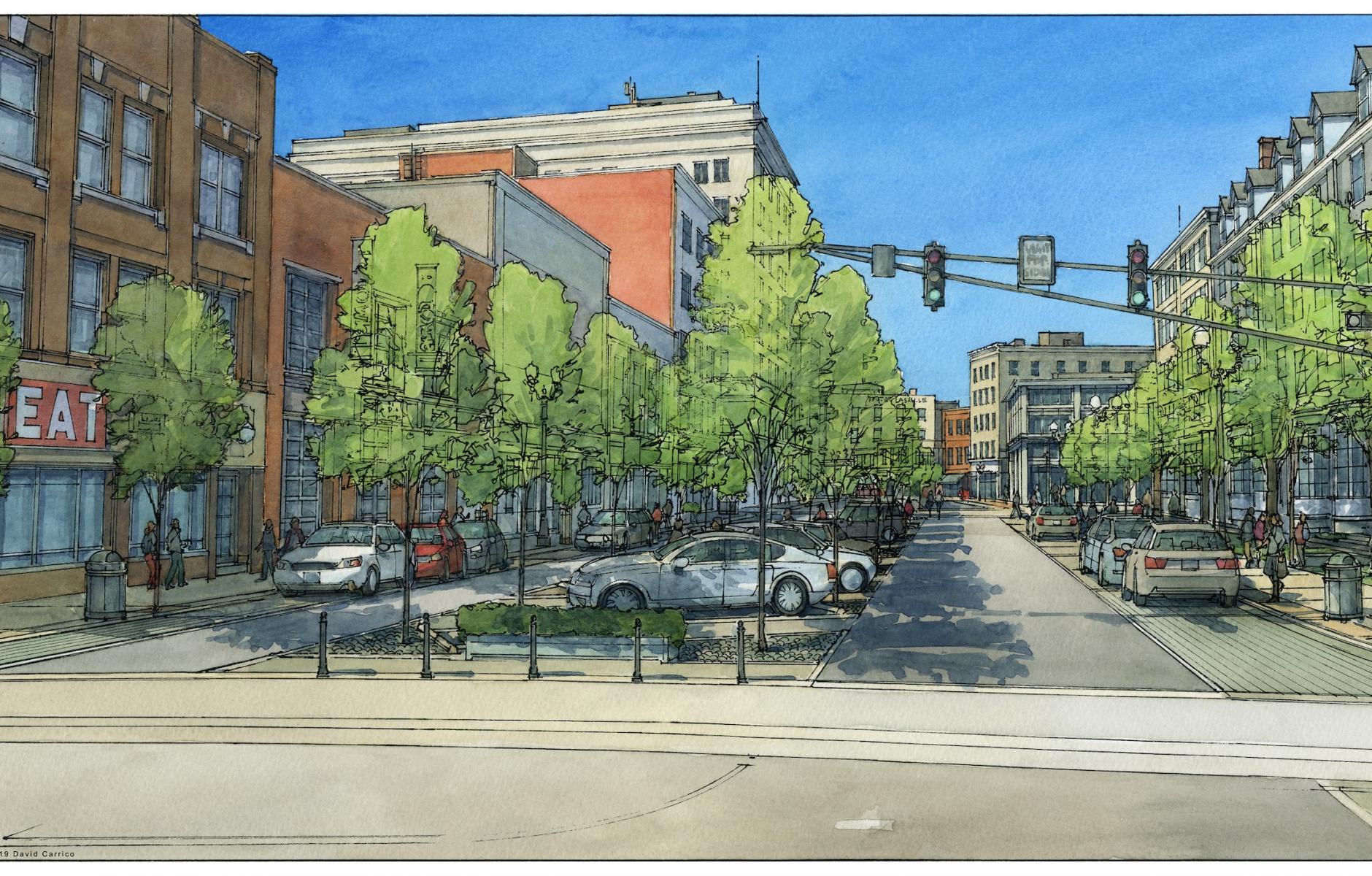
Elevate your urbanism at CNU 32
The annual CNU Congress is a multidisciplinary event that attracts top urban designers and planners and related fields.
Congress for the New Urbanism “foundational courses” are technically 101-level, but they are typically taught so that even highly experienced practitioners can learn something. That’s true because the audience is knowledgeable, and the faculty often includes the top experts in the world in particular subdisciplines of urban design and related fields. This year’s theme is Restorative Urbanism.
CNU 32 in Cincinnati (May 15-18) features some great foundational courses, along with myriad other offerings, that will make the gathering worthwhile for attendees. The following topics will be featured:
Walkability and health
Walkability for a Restorative Urbanism, with Joanna Lombard (University of Miami) and Jeff Speck (Speck Dempsey). This course will show the potential for delivering healthy communities through improvements to walkability. Architect and academician Lombard is a pre-eminent researcher on health and the built environment who will share her knowledge from extensive studies. Speck may be the best-known walkability expert in the US, and he will talk about the principles and practices of planning for greater walkability.
Suburban retrofit
Suburban Retrofit: Urban Design Solutions for Redesigning Suburbs will be presented by Ellen Dunham-Jones (Georgia Tech) and June Williamson (The City College of New York). New Urbanism offers a blueprint for reforming the vast suburban monoculture into better-connected, more walkable, sustainable, and equitable places. This transformation is happening in a thousand ways, and the best guides to this trend are Dunham-Jones and Williamson, authors of Retrofitting Suburbia: Urban Design Solutions for Redesigning Suburbs, and Case Studies in Retrofitting Suburbia: Urban Design Solutions for Urgent Challenges.
Streets and Tactical Urbanism
For New Urbanists to continue to be successful, we need to retrofit existing streets and reclaim street space for people walking, biking, and taking transit. Curb Control: Stories from the Frontline in the Battle to Reclaim Street Space from Cars with Victor Dover (Dover Kohl), Mike Lydon (Street Plans), and Tony Garcia (Street Plans) looks at how to reclaim that space.
Tactical Urbanism is an important tool to enable that process. Lydon, who co-authored the text that launched the Tactic Urbanism trend, will present another core session called Implementing Tactical Urbanism.
Trees and Restorative Urbanism
Tree canopy in cities is critical to a livable community, especially due to its role in public health—physical, mental, and environmental. However, past urban practices placed trees in an aesthetics category only, causing canopy decline over time. Low-income and marginalized populations have borne the brunt of these impacts. Worsening climate change—especially heat stress—has driven cities to begin to invest in urban forest restoration. A session on Exploration of Urban Forestry Planning: Mapping a Path to Remedy Past Harms will be presented by Rachel Comte (Urban Canopy Works) and Jeff Speck (Speck Dempsey).
Architecture and the public realm
New urbanists know that the primary task of urban design is to physically define streets and public spaces as places of shared use. But what are the opportunities for restoring the public realm? Recovering Main Street Architecture will be presented with Judith Bell (DPZ CoDesign), Ben Northrup (DPZ CoDesign), and Adam Bonosky (SWBR).
Land-use regulation and placetypes
Land-use regulations may obstruct and clear the way for a well-connected, diverse built environment. Understanding “placetypes” is a key part of clearing the way for better development, yet this form coding aspect is less well known. Envisioning Change and Implementing it through Placetypes will feature Toccarra Nicole Thomas (FBCI), Stefan Pellegrini (Opticos Design), Kathleen Galvin (Galvin Architects, and Marques King (Fabric[k] Design).
Building types
A broad range of building types and the architectural design of individual buildings contribute to a robust pedestrian experience and a diverse neighborhood. New urbanist designers are always innovating in this area. A session is planned to discuss Standard Building Types and the Impact of New Urbanist Design (Speakers to be determined).
For more details on educational opportunities at CNU 32, click here.




